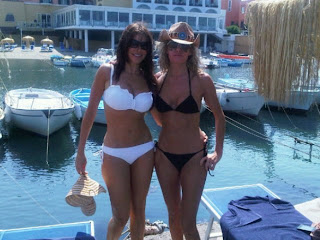City
Milan, the capital of Lombardy, has a population of 1.3 million people. It is the largest industrial city in Italy that has many different industrial sectors. It is a magnet for designers, artists, photographers and models. The city has an ancient historical center with important buildings and buildings of great interest to tourists, accounting for why so many people from all over the world want to come visit the city of glamor.
Weather
Italy's climate is predominantly Mediterranean: Alpine in the north, hot and arid south. Winter in Milan is relatively mild but foggy, with temperatures ranging from 0 to 8 degrees Celsius. Summer can be very humid with temperatures from 14 to 29 degrees. In March and April temperatures range from 6-18 degrees, and in October and November (from 6 to 17 degrees).
Events in Milan
Festival of Sant'Ambrogio
Once a year, on December 7, Milan celebrates Sant'Ambrogio saint is a fair called "O O bei bei. " This festival occurs on the streets in the area around the Basilica of Sant'Ambrogio in the center of the city. On this day the whole area is full of stalls where you can find antique furniture and various handicrafts, as there are stalls delicacies. In fact you can find fresh meat, cheese, candy and drink the official wine of the day, vin brule, with roasted chestnuts, which are what is needed on a cold day to warm up. The festivities begin and end two days before the fair on December 7.
Carnival Ambrosiano and the typical costume
As in all other parts of Italy the Carnival ends, the carnival comes to Milan. The Meneghino, which is the typical dress of Milan, is the tricorne, a hat with three edges, a wig with a braid, a long red and brown jacket, green pants and knee socks with red and white stripes.
Procession of the Magi
This festival takes place on January 6th, the Epiphany and commemorate the arrival of the wise men. In fact there is a religious procession in which three people represent the role of the Magi and lead all the people from Piazza Duomo to the church of Sant'Eustorgio. Here the wise men offering gifts to poor children and donate their crowns at the end of the priest and the religious procession and ends.
EXCURSIONS AND TOURS IN THE CITY OF MILAN
Tourism Tour Visit Cenacolo Milan - Leonardo Da Vinci "Last Supper"
Make a panoramic city tour of Milan to admire the city's most famous landmarks such as the Duomo and the Sforzesco Castle. This may be the opportunity to see the famous "Last Supper"by Leonardo Da Vinci, and enjoy an excellent espresso in the bar frequented by the famous composer Giuseppe Verdi
Tour of Milan City Hop-On Hop-Off
Discover Milan by two different routes! Look at all the most important traveler on a double decker bus, open up, with 12 stops you can hop on and off whenever you want.
Private City Tour
Walk the streets of Milan to find many of the monuments and museums.This is the ideal way for visitors newly arrived in Milan to begin moving into the city and explore its rich history and heritage.Attractions include the Duomo, Sforza Castle, the Royal Palace, Teatro de La Scala and the shopping paradise - Galleria Vittorio Emmanuele
Private Tour of the grand designs of Milan
From the great architecture of the Duomo, the furniture of Cappellini, Milan has much to offer those interested in design. Some of the brands and most popular products in the world have their origins in Milan. So, book your private tour around Milan, to admire the great works of the famous designers who have made this city what it is today.
Half Day Tour and Shopping Fashion in Milan
Discover the latest trends and new designers with a half-day private tour in Milan. Take the road less known to the city to discover all Novidades in international fashion and take valuable advice from your personal shopper.
Source: http://www.aboutmilan.com























